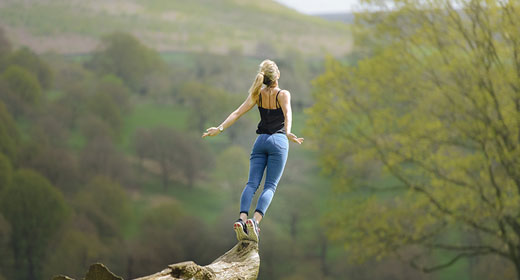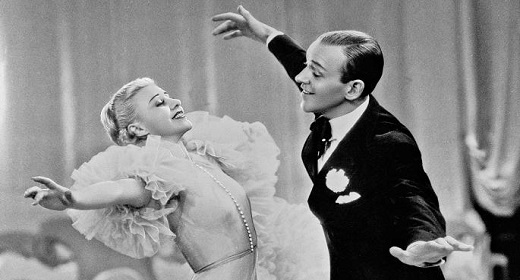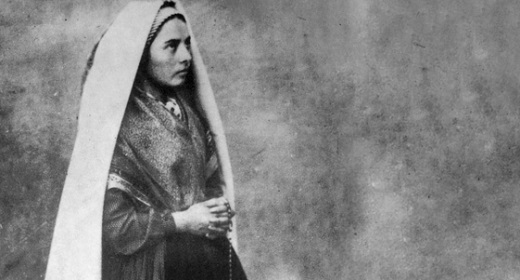by Dan Millman: What counts is not the number of hours you put in but how much you put in those hours.-Anonymous
In this chapter, I will share key principles to enhance and accelerate your learning. No matter what activity you practice, you’ll be able to apply the following principles, perspectives, and practices to your activity.
Warmup and the Transitions of Life
Our lives are filled with cycles and with periods of transition. Our growth from infancy through childhood, adolescence, and adulthood required many transitions into increasingly advanced modes of behavior, responsibility, and understanding. Birth and death are the Great Transitions. Graduation from school, beginning a livelihood, getting married, raising children, and retiring are all lesser but typical examples of changes in our lives. Life itself consists of a series of changes, sometimes smooth and orderly, sometimes unexpected, minute to minute, day to day, year by year. Inner athletes need the capacity to recognize these periods of transition in training and in daily life.
Years ago, while working in a busy offlce, I used to snarl at my wife when I arrived home from work until I realized that all I needed was a fifteen-minute transition to decompress, slow down, and space out before I was ready to listen happily to her news of the day.
Most of our transitions are sudden or nonexistent. Adolescence is a transition that leaves most of us unprepared and traumatized. Many of us have difficulties with the transitions of getting up in the morning or going to bed at night. Our minds, emotions, and physical rhythms may still be adjusted to an earlier frequency as we begin a new activity requiring much slower or faster vibrations. No wonder we sometimes have difficulty coping with new situations.
Transitions are in-between periods. When we leave work and are driving home, we’re in between. When golfers hit the ball and are walking down the fairway, they are in between. Learning to enjoy and make use of these in-between periods will even out our lives. Unless we have learned to appreciate the value of in-betweens, our lives consists of jerky motions, highs and lows, stops and starts a series of shocks. We make conscious use of transitions by noticing when we’re moving from one kind of activity to another which ones may require a different mental, emotional, or physical approach.
Instead of leaping out of bed in the morning, we may find it useful to set the alarm fifteen minutes earlier, giving ourselves time to glide into the kitchen, put on some water for herb tea, read a few minutes, look out the window and take some deep breaths, say hello to a new day. I start my day by sitting up with my eyes still closed, doing a few slow, deep breathing exercises, and drinking a glass of water before I get out of bed.
You may wish to include some light calisthenics or to walk around the block before breakfast as part of your morning transition. This is only a suggestion; the main point is to create transition rituals that work for you.
Nowhere is a transition ritual so crucial as in the world of athletics. We call it a warm-up; it serves as a buffer zone between the day’s prior events and the moment of truth in the athletic arena. A proper warm-up serves to prepare us for the unique demands of sport and helps us avoid days when nothing seems to go right.
Most of us are familiar with a physical warm-up to get the muscles warm, stretch out, and prepare physically for the intensity of training. Relatively few athletes appreciate the importance of a concurrent mental and emotional warm-up.
Engaging in mental warm-up means determining a clear course of action for the day. You’ll want to choose realistic goals, based upon the circumstances and your energy level that day. Mental warm-up involves turning your attention to the place of practice, leaving all the day’s cares and concerns at the door. Finally, you’ll want to cultivate the proper attitude of respect and gratitude?he right mental “set”?or your activity. This is the purpose behind the Japanese tradition of bowing upon entering and leaving the practice hall.
Just as a decathlete needs a similar transition between the pole vault and javelin throw, a gymnast requires a mental transition between two pieces of apparatus because of the different qualities of each. Even a ballroom dancer needs to make a shift between a waltz or a disco dance. Runners and swimmers cultivate a different approach to sprinting and distance events; golfers need different mental warm-ups for driving and putting. Mental warm-up provides the proper focus and energy for each activity.
Emotional warm-up might begin with a few deep, calming breaths. Then you can recall the initial excitement you first felt about your sport and form a few mental images (mental warm-up) that create heightened emotional energy. Choose your emotional goal?ocus on what fires you up about training. Imagine yourself succeeding at your goals; picture yourself winning because of a good practice day. Feel how much you can gain from some wisely directed energy.
Mental and emotional warm-up might seem to be long and involved, but they can actually take place almost simultaneously, at the speed of thought. The whole process might take place in the space of five slow, deep breaths or a moment of quiet contemplation as you make your transition. Many athletes do something like this subconsciously. Inner athletes do it consciously and strategically in order to control and amplify their direction and energy for the day.
Physical warm-up should be a definite period, set aside especially for the purpose. It doesn’t have to (and probably shouldn’t) be a long, involved process. Yet it is a time to get the body literally warm, oxygenated, fully awake, free of sluggishness energized and relaxed. Never rush into warm-up?it’s not the main event. Our bodies are like automobiles. You wouldn’t want to start a cold engine, then race off at top speed. The oil (or, in our case, blood) isn’t warm and flowing yet.
You may start some days feeling clogged up or lethargic. Don’t let that discourage you. Some of my all-time best workouts began like that and ended well. It just took the body longer to warm up on that kind of day.
After a training session, you may wish to do some stretching and deep breathing exercises as a warm-down.
Learning How to Learn
When you were a child you may have had the opportuni ty to play in an empty lot, just after a fresh snowfall when the bare earth was hidden by a smooth cover of snow. Maybe that winter you were the first kid on your block to blaze that first straight, clean pathway through the crunchy, knee-deep carpet of white.
As it happens, the neurological pathways you blaze when you learn a new movement pattern are just like the paths through that snowy field. The white carpet is your nervous system; the pathway is a neural one, and it represents a specific movement pattern or skill.
After all your preparation is done, you are ready to learn your new skill?laze the correct neural pathway. Repetition of this pathway will lead to development of your skill. This applies to any movement pattern, simple or complex, whether running jumping swinging a bat, throwing a ball, or turning a triple somersault.
I use the image of the snow-covered lot (above) because it represents graphically what happens in your neuromuscular system when you are learning a new skill. The solid line from A to B shows the perfect execution of a skill. If line A? is your first attempt at the skill, it means that you were totally prepared?entally, emotionally, and physically?nd were thus ready to perform it correctly the very first time.
Because most of us are not perfectly prepared, our first attempts are represented by the curving dotted lines above. Then we gradually home in on line A?. This homing in process takes varying amounts of time, depending upon the approach to learning.
Your first attempt at a new skill is the most important one, because you’ve formed no previous pathway. The next time . . . and the next time, you’re likely to follow the first path you made. Every time you take the same neural pathway, you’ll stabilize and reinforce that motor response whether it is correct or not.
Every time you let yourself practice a movement incorrectly, you’re increasing your ability to do it wrong. It follows that you want to repeat the correct movement pattern as much as possible and to avoid, at all costs, repeating an incorrect pattern. A fundamental rule of learning, therefore, is this: Never repeat the same error twice.
We know that errors are a part of learning. You will make errors. In order to avoid stabilizing the errors, however, you have to make consciously different errors each time, in order to move yourself toward the correct pattern. If you make different errors, you don’t habituate yourself to any single incorrect movement pattern. This is a very important point, because one of the prime causes of slow learning is repetition of (and thus habituation to) one incorrect motor response. You get used to swinging the bat too low; you get accustomed to arching in a handstand; you begin to feel comfortable shifting your weight to the wrong foot on your golf swing.
As you consciously make each attempt different, you’re simply exploring the many possibilities for error as you home in slowly to the straight path, the correct way, without forming bad habits.
Awareness and Practice
If you practice hitting a thousand golf balls every day but really pay attention to only two hundred swings, then you’re wasting eight hundred swings a day?nd in fact, those eight hundred semiconscious swings may be doing you more harm than good, because, as I just pointed out, you can form bad pathways without noticing it?ike walking through the empty lot in your sleep.
Practice doesn’t make perfect; only perfect practice makes perfect. Proper learning technique consists not only of attempting the correct pattern but avoiding the incorrect one. Remain fully aware in your mind and in your body of every attempt you make during practice. If you make an error, never just “do it again.” Take a moment to be fully aware of what went wrong if you don’t know, you’ll just repeat the error. Then make a determined attempt to do something different.
The Stages of Practice
Most of us assume that if we want to become skilled, we must practice the skill over and over, many times. This is not necessarily true. Most beginners tend to practice too much at first. If you’re a beginner at a particular skill, you’ll probably have a low level of “feeling awareness” at first. You don’t exactly know what the skill, performed correctly, should feel like. Don’t practice many repetitions, therefore, or you’re likely to develop incorrect patterns. Instead, begin with a few repetitions, maintaining intense concentration and real interest. You may continue while concentration and interest are strong but if you begin to repeat an error, or if real interest and attention start to fade?f your approach becomes casual?hen stop, and come back to your practice later on. Practice is like gambling: you have to know when to quit. When you find that you can consistently repeat the correct pattern, only then should you begin to do many repetitions for endurance and stabilization.
Following this principle, I taught myself within a very short time to juggle three balls. I’d try each progression, beginning with one ball, then two, and finally three, only four or five times each day. Working for five minutes a day, within five days I taught myself to juggle three balls. It’s very true that some people, by practicing for an hour or two, might learn to juggle three balls in one day. What I want to emphasize, however, is that the way I suggest, aligned with natural order and realistic psychological dynamics, will allow you to learn correctly. Many “fast learners” also pick up little compensations and poor habit patterns. They may learn the skill fast, but they don’t necessarily learn it right. Take the time to learn it right, and you’ll save time. There’s a big difference between learning and learning correctly.
As you practice, stop for a moment between each two attempts. “Check yourself,” take a deep breath, shake loose, and relax. Feel awareness tingling through your body, out to your fingertips and toes. Feel your connection to the earth. Then continue.
Learning, then, is not just a matter of casually (or fiercely) performing a motion over and over. That may build stamina and muscles, but it will not necessarily develop the straightest path to natural ability. What you require is a strategy of training that employs insight and concentration in place of mechanical repetition. The following techniques and principles make up that strategy of effective learning.
Overcompensation
Overcompensation is the single most valuable aid to rapid learning you’re ever likely to come across. Here’s why: When you’re performing an incorrect movement pattern over a period of time, you’re going to become comfortable with that pattern. Any changes?ven toward the correct pattern?re going to feel “strange” because you’re not used to them. When you’re wrong, what’s right feels wrong. Because of this principle, corrections tend to be insufficient. Your attempts tend to cluster around your old habit.
If, for example, you’re learning to hit a baseball and have formed a habit of swinging too high, you’ll tend to continue swinging high. Even if someone tells you to swing lower, you’ll correct only a little bit, otherwise it will feel “all wrong” Maybe you’ll swing a little lower than before, but your swing will still be too high.
Recognizing the law of balance, therefore, you have to apply overcompensation to your practice and work both sides of the movement. You have to make a determined attempt to swing “much too low.” When you attempt this, it’s best if you actually swing under the ball. After working both sides?oo high and too low–you’ll know where the middle is. (Most likely, though, in trying to swing “too low,” you’ll connect with the ball.)
The principle of overcompensation?r working both sides applies to elements of timing, balance, accuracy, and force in every possible sport or movement art. It works on the same natural gyroscopic principle that allows a guided missile to home in on target quickly, by moving from one side to the other, until it finds the middle. “Finding the middle” is what effective learning is all about.
Faster Learning Through Overcompensation
- I’m going to assume that catching an object in front of you that you’ve thrown up behind your back is a new skill for you. Take a lemon or other unbreakable fruit. Toss it behind your back and up over your shoulder, catching it in front of you in the same hand. You can throw the object over the same or the opposite shoulder of the hand in which you hold the object. The main object here is to make conscious use of overcompensation. Work on one variable at a time. If you threw too far left, then on your next attempt throw too far right. If you then throw too far behind you, make sure you throw way in front of you. Then you’ll find the middle.
Using this principle, you should be able to learn this tricky skill in just a few minutes. You can then apply the same technique to any endeavor. But like many other athletes, you may experience resistance to working both sides; it may seem like a “waste of time” to try to do something deliberately wrong. You may feel impatient just to do it right the next time and want to avoid another wrong attempt even on “the other side.” If that’s the case, I hope the reasons behind the strategy of overcompensation are now dear, making its time-saving usefulness obvious.
If you are incapable of working both sides because of insufficient strength, suppleness, or other qualities that would enable you to overcompensate, then it’s back to basics. You need more preparation, or else you’ll only ingrain the error more deeply.
If you feel acutely uncomfortable or even fearful of working both sides because it “feels too strange” (especially if you’re engaged in a high-risk sport), that’s normal. If you’re a high diver and you keep under-throwing a dive, you may feel just a bit nervous about the prospect of overthrowing the same dive. Still, the principle applies; you can make use of it or not. If you wish to learn successfully and rapidly, you have to be willing to work both sides.
Ideomotor Action and Mental Practice
Your powers of imagination can help you enhance old skills and learn new ones. This is possible because of the interaction of mind and muscle. In the negative sense, turbulent thought can impose muscular tension, as you’ve seen. On the positive side, clear mental imagery can even with out actual movement?evelop correct muscular responses. This principle can be demonstrated with a simple experiment:
MIND MOVING BODY
- Tie a small weighted object (like a ring) to a six-inch length of thread or string. Let the object hang by the string, held by your thumb and first finger. Hold the string still, then begin to imagine that the ring is swinging back and forth, back and forth. Continue to imagine this, and watch what happens.
Next, while the ring swings back and forth, imagine that it is going in a circle instead; see the results.
This test demonstrates the phenomenon of ideomotor action?hat for any image of movement there is a subtle, corresponding muscular impulse. If you relax the body and imagine yourself performing a movement correctly, the muscles respond. Ideomotor action is a key principle behind mental practice.
The value of mental practice is well established in research. One study of mental practice used a group of sixty beginning basketball players. The group was split into three groups of twenty each. The first group practiced shooting baskets from the free-throw line, attempting a specified number of shots in a specified time for a period of two weeks. The second group was asked to practice mentally in exactly the same fashion?magining themselves shooting baskets. The third group performed unrelated activities during that same time period.
Everyone in each group was tested at the beginning of practice and again after the two-week period. As expected, the third group didn’t improve. Those who practiced mentally, however, improved almost as much as those who trained physically.
The moral of that study is not, of course, that we should begin practicing from the living-room couch but that mental practice can be very useful as a supplement to physical practice. I gained a reputation as a “natural” when I competed on the University of California’s gymnastics team, because I seemed to learn difficult movements “effortlessly” on on the first try. What my teammates didn’t know was that I would dream about those moves the night before and perform them in my head all day before actually attempting them. When I finally executed the movement physically, it felt as if I’d done it many times already. This confidence helped me to overcome fear, too.
In some situations especially, mental practice has distinct advantages:
- It’s absolutely safe-unless you mentally practice your golf swing while driving down the freeway.
- You can do it anywhere Be careful with this, however. I once imagined myself doing a trampoline routine while sitting in a dull political-science lecture. As I practiced, my arms made waving gestures as I “twisted” and “somersaulted.” The professor stopped his lecture, and all eight hundred people in the hall strained for a look at “the guy in the front row having a fit.”
- There’s no fear of failure in mental practice, because it can be free of error; you can perform brilliantly.
There are exceptions to this rule, too. One of my gymnasts at the University of California consistently fell off the balance beam. As surely as the sun rose, as regularly as Monday followed Sunday, she’d fall off. She fell on weekdays or weekends, rain or shine, in practice or competition, without discrimination.
One day, out of sheer desperation?or her safety and my peace of mind? suggested that she try mental practice for a while. “Go through five or ten routines perfectly, in your head,” I said, feeling that perhaps in this way she’d develop a good habit.
I busied myself with the other gymnasts until later, when I glanced over and saw her sitting there, brows knitted with concentration, eyes shut tight, whispering to herself, “Damn! Oops . . . oh, damn!”
Puzzled. I asked her what was the matter. She replied, “Oh, nothing, Coach. It’s just that I keep falling off.”
- Another advantage of mental practice is that it’s free. If you take those private lessons twice a week instead of three times, or an hour each day instead of two, you can spend the rest of your time practicing in your imagination. You really get your money’s worth.
- Mental practice means that you are concentrating automatically, because concentration is part of mental effort. You can do casual physical practice by just letting your body go through the motions without real attention. Not so with mental practice. Because of this, it isn’t as easy as it sounds. You have to develop your capacity for visualization, imagery, and concentration, but once you do, your efforts will reap rewards of learning.You can use mental practice if you’re ill or injured, or at odd moments during the day when there’s nothing much to do. It beats thinking about your problems and you can get a jump on your favorite opponents.As you imagine yourself doing well in competition or practice, this visualization will also serve to dissolve any limiting self-concept, since your subconscious mind doesn’t differentiate strongly between what you see or do and what you imagine vividly.
Athletes who improve faster than equally-prepared counterparts simply put in more mental practice time. When someone would ask me how I learned a particular gymnastics move, I’d joke, “Oh, I think about it a lot.” Actually, of course, thinking about the movement was part of my practice.
Mental practice also explains the common phenomenon of athletes returning to a sport after a layoff only to find that their technique has improved. It also explains the occurrence of big improvement in a skill on a Monday after an athlete had trouble with it on a Friday and took the weekend off. In just thinking about the movements, it’s possible for you to improve, because you don’t practice any errors. Mental practice is more efficient than physical practice.
The main requirement of mental practice is to stay entirely relaxed so that no other muscle tensions interfere with the proper response. While practicing mentally you can lie down, or you can sit quietly. Of course, you have to have some kind of “feel” for the movement before practicing it in your imagination. Once you know how it should feel, practice it repeatedly in your mind.
Slow-Motion Practice
Slow-motion practice, a key to reaching the highest levels of mastery, gives you the time to be aware of every part of a movement, whether it’s a baseball or golf swing, a javelin toss, or a karate punch. When you perform an activity in slow motion you can sense such complex parts of the act as weight shift and coordination of body parts. Since most unconscious errors occur in the middle of a movement sequence, slowing the movement down can have surprising benefits in ease and speed of learning, because mistakes that were formerly hidden can become painfully obvious.Slow-Motion Expierience
Test 1.- Hold your right hand in front of your face, so that you are looking into your palm. Quickly move your right arm out to the side, turning your palm outward, and stop. Notice that you were aware of only the beginning and the end of that movement.
Test 2. Now repeat the same sequence, but this time move your arm and hand in slow motion?s slowly as you possibly can. Let it take a full minute. Be aware of the relaxation of the arm and hand muscles. Notice how each finger turns; clearly see the different angles of your hand, as if for the first time.
In this test, you were clearly aware of the movement of your arm and hand in its entirety, from beginning to end. I discovered, after a period of slow-motion practice, that I could move faster than ever because in moving slowly I became aware of tension and was able to let it go. Without tension, it’s possible to move with blinding speed.
Slow-motion practice is like studying slow-motion instant replay films of training, except that in practice you’re also feeling, not just seeing. You can apply this technique to virtually every sport or movement form. It applies particularly well to activities like golf, baseball, tennis, and handball. In coaching gymnastics, I often carry athletes slowly through a somersaulting movement so that they can become aware of every part of turning over. Slowing down your practice expands your awareness and eliminates the blurred blind spot encountered in rapid movements. You can be very creative in applying slow motion to different activities. (If you figure out how to apply it to skydiving, of course, I’d like to hear about it.)
Slow motion works, and it’s fun. Like the practitioners of T’ai Chi, you may even discover that slow-motion sport is a form of moving meditation.
The Beginning-and-End Method
Beginning and end points are keys to a complete movement skill. Sometimes it isn’t practical to work in slow motion?for example, in learning a cartwheel or a somersault. In cases like this, it’s useful to pay strict attention to a perfect beginning and ending position. You may not have any idea where you are in the middle, but if the beginning and ending positions are just right, the middle will take care of itself. That’s why so many coaches instinctively emphasize the correct follow-through.
Golf in particular benefits by awareness of the followthrough. Don’t just swing the golf club, hit the ball, and move on. Hold the ending for a moment, and check your position, your balance, the position of your arms, head, and body. When I teach golf, the first emphasis is on balance and wholebody centering: then I show the best beginning and ending positions. These things form the basis of a consistent swing.
The physical application of beginning-end awareness is that if you complete a movement and find that you’re in the wrong ending position?or example, if, in attempting a somersault, you find yourself ending up on your nose instead of your feet?ou should move as rapidly as possible to the correct ending position. The next time, you’ll find that you won’t be quite as far off?erhaps on your ear this time?nd you should again move instantly to the correct ending. Before long you’ll simply end in the proper position, and the middle will begin to flow smoothly as well.
Golf in particular benefits by awareness of the follow through. Don’t just swing the golf club, hit the ball, and move on. Hold the ending for a moment, and check your position, your balance, the position of your arms, head, and body. When I teach golf, the first emphasis is on balance and whole body centering: then I show the best beginning and ending positions. These things form the basis of a consistent swing.
The physical application of beginning-end awareness is that if you complete a movement and find that you’re in the wrong ending position?or example, if, in attempting a somersault, you find yourself ending up on your nose instead of your feet?ou should move as rapidly as possible to the correct ending position. The next time, you’ll find that you won’t be quite as far off?erhaps on your ear this time?nd you should again move instantly to the correct ending. Before long you’ll simply end in the proper position, and the middle will begin to flow smoothly as well.
Part-Whole Practice
Any skill, like the functioning of your car’s carburetor, is made up of component parts. If you want to clean a carburetor and find out why it isn’t working well, you take it apart and find the trouble spot. It works the same for a movement skill. The entire carburetor?r the skill?ay be fundamentally all right . . . except for one little part (which can cause imbalance in the whole), but you don’t know where it is. That’s when analysis comes in very handy.
A good teacher or insightful student can dive to the source of the problem, undistracted by symptoms. Once isolated, the problem is practically solved.
I’ve found it useful to teach a new movement skill by breaking it down into its parts first the beginning, then the middle, then the end. Afterward, it’s easy to put the whole thing together.
Analysis can also be applied to specific drills that can save time and make learning an entire movement pattern much easier. Instead of isolating your practice to a single activity or skill, it’s valuable to practice related drills. Divers, for example, will often train on the trampoline to learn somersaults and twisting without getting wet. Acrobatic skiers will do the same, because they can practice more repetitions with less energy. Pole vaulters can use certain gymnastics drills to learn more efficient ways of working the pole. These fundamental drills, which can be created and applied to any activity, save time.
The Programming Principle
Today, more and more programmed instruction is becoming available. It’s possible to learn complex subjects?uch as the fundamentals of law, medical terminology, English grammar, languages?hrough programmed material. Programmed video training for movement activities will soon become plentiful. Programmed learning is based on the principles that:
- we learn in small steps, taking it in simple and progressive increments.
- we take an active part?esponding to the cues.
- we get immediate reinforcement and feedback?he correct answer is displayed as soon as we make our response.
- we feel successful, because of the small, simple progressions.
Good programmed learning is designed around commonsense principles. They make learning easy and therefore fun. I have approached learning?nd teaching?sing the same principles, and have found them to be of great use to myself and to my students. Any movement can be learned by first taking it apart (analysis), then practicing it in very simple progressions or steps. Programmed progressions allow for a constant feeling of success in which the process of learning-rather than a single end result-becomes the goal.
Imitation: The Ultimate Technique
Children are masters of imitation, the most powerful and natural way to learn. As infants, we were masters of imitation; it’s how we learned to walk, talk, and use many other practical life skills; that is, before we learned that it was “bad” to be a “copycat,” that we were supposed to do our “own work.” I was fortunate enough to have parents who never discouraged my interest in imitation. They told me that it was fine to copy people as long as I was certain their qualities were worth copying. I extend that advice to you.
We can learn far more than athletic skills through imitation. As a young man, I modeled different personal “styles” by imitating the qualities I admired in people. Modeling these styles permitted me to “try on” different ways of being. I’ve never met a single person who didn’t have at least one quality I admired.
Everything and everybody has a mixture of virtues as well as issues. If you look for the good in everyone you meet, that person becomes your teacher.
We have no friends;
we have no enemies;
we have only teachers.
-Anonymous
To learn a skill, we need to find someone who is skillful and watch that person carefully. Study the skilled person’s musculature and movements, facial expressions, arms, and legs. As we watch such persons perform, we need to feel ourself moving in the same manner.
Our ability will improve with practice. Even the most cr~ ative painters began by copying. If you wish to copy a drawing of an accomplished artist, you may not be able to reproduce it precisely at first, but with practice, your copying will improve. We can practice copying anywhere or anytime.
Of course, in order to copy well we must first be prepared; we can’t imitate a power-lifter unless we’ve developed some strength or imitate a ballet dancer unless we’ve developed the necessary suppleness and muscular control.
I’m convinced that imitation is the master technique of learning because it works at the subconscious level?s if one body learned directly from another without intervention of the intellect.
If you haven’t made the best use of your innate powers of imitation, it’s probably due to one of the following reasons:
- You may not be sufficiently prepared to copy well. (If so, back to basics; develop your talent.)
- You may experience unconscious resistance to copying someone else because of a belief that you must “live your own life” or because you feel that you could never imitate an expert’s skill level (as a result of your low self-concept) or because you aren’t ready to acknowledge that someone else may have a quality you don’t presently possess. If the latter is the case, swallow your pride.
- You may be copying the wrong people or the wrong qualities. This is an ever-present fear of parents, who feel that their children may “pick up” the wrong qualities if their kids don’t have proper playmates. Exposure does have a lot to do with the development as a child and as an adult, since we don’t imitate that which we’ve never seen.Imitation Practice
Have a friend face you. Lets say your friend is a man. You hold his arm in an unusual position. Copy his arm position, as if looking in a mirror. Have him take another position, perhaps with both arms askew. Imitate that. Then mirror his posture. Do the same thing as he moves very slowly.You’ll find that, with a little practice, you can mirror your friend with a high degree of precision, and you can apply your ability to imitate in your sports activities and your daily life.
In this chapter I’ve outlined practical ways to learn how to learn. Only you have the power to bring the words and concepts to life. Start with the principles that make the most sense to you or that you find the most fun. If you use even a single one of these techniques to its fullest extent, it will enhance your game and can enrich your life.
Just do your best; it’s all you can do. Don’t ask how; just begin, and do it now. The world waits for you.
-Harold Whaley










































